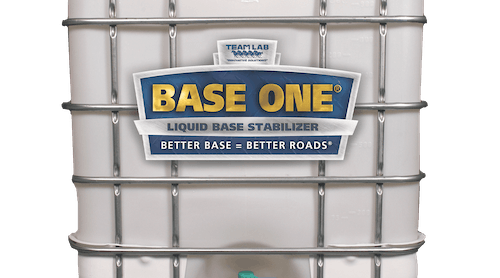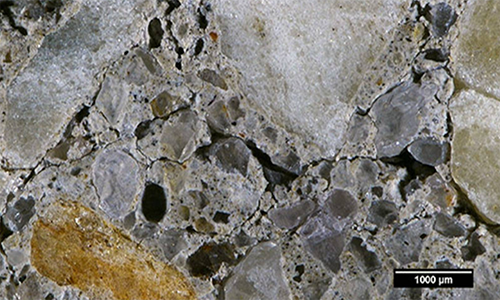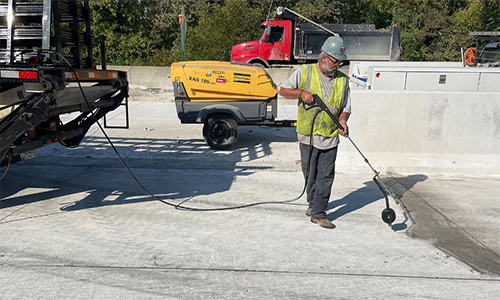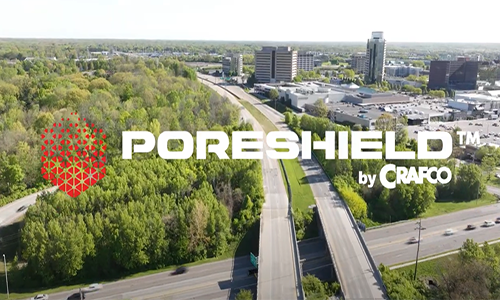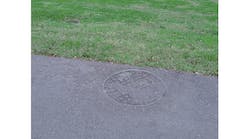By Timothy Miller, Contributing Author
Indiana is within a day’s drive of more than 50% of America’s and Canada’s population, and it also is home to more pass-through highways than any state in the country. Hence the Hoosier state’s nickname as the “Crossroads of America.”
Indiana’s nickname will soon be reinforced with the addition of 26 miles of new interstate highway.
By the end of 2024, the Indiana Department of Transportation (INDOT) will complete the nation’s newest interstate: I-69 in southwest Indiana.
Realizing this 75-year dream will give Indiana the nation’s newest interstate.
The final 26 miles of I-69, branded as “I-69 Finish Line” to replicate the state’s rich history in auto racing, is the northern-most section of the new interstate project. The I-69 Finish Line traverses three counties and will complete a 142-mile network that linking southwest Indiana to Indianapolis.
Since breaking ground in Evansville, Indiana in 2008, construction has progressed north toward Indianapolis. By the end of 2018, over 116 miles of new I-69 had been designed and constructed north of Evansville. In 2019, construction began on the Finish Line segment of the project.
The I-69 Finish Line upgrades the existing four-lane State Road 37 to the new I-69. The project also constructed 26 centerline miles of interstate, more than 35 lane miles of new local access roads.
The improvements included the construction of over 39 new bridges and replacing and/or upgrading 35 existing bridges on I-69. Ten interchange access points will replace the 92 pre-existing at-grade crossings along State Road 37, permanently removing 14 traffic signals to establish free-flow traffic conditions. The project also adds travel lanes to more than eight miles of I-465 on the south side of Indianapolis.
To prepare for the added capacity, five bridges carrying local traffic over I-465 are being replaced.
Although planning for the I-69 Finish Line project began decades ago, the project’s environmental study began in earnest in early 2014. INDOT conducted hundreds of meetings and received thousands of comments while preparing the project’s Environmental Impact Statement (EIS). Access points, the construction of new local access roads, and interchange locations were frequent topics. In February 2018, the Federal Highway Administration approved the EIS and issued the project’s Record of Decision (ROD), which triggered the start of INDOT’s design activities for the corridor.
After a thorough review of various delivery techniques, the decision was made to construct the final 26 miles in five construction contracts: four design-bid-build contracts and one design-build-best-value contract.
As 2023 begins, three of the five construction contracts are complete. The largest of the five contracts, a $728M design-build-best-value, will reshape I-69 in the northern-most section of the project, including a new system interchange and additional travel lanes and bridges along I-465.
The I-69 Finish Line pre-construction activities included design, geotechnical borings, real estate acquisition, and utility relocation efforts. Over 700 parcels of real estate were acquired in preparation for construction and miles of operational utility lines laid along the right of way of the former State Road 37 had to be moved.
In total, more than 18 miles of combined water and sewer lines, 25 miles of power lines, 27 miles of gas lines, and 52 miles of cable/fiber lines were relocated along the corridor. Thousands of soil borings were taken along the 26-mile corridor to provide data that could be utilized in the design of the bridges and pavement.
Two Januarys ago, INDOT closed five miles of existing State Road 37 to expedite construction through the city of Martinsville and provide safer working conditions for crews. The closure prompted an extensive public involvement campaign that began at least six months before the closure. INDOT conducted several public meetings and worked with local officials, businesses and the city’s Chamber of Commerce leading up to and during the closure.
On December 21, 2021, INDOT opened the new five miles of I-69 through Martinsville on schedule, which included three interchanges within city limits, 4 miles of local access roads, and a vehicular/pedestrian overpass that carries Grand Valley Boulevard over the new interstate.
AASHTO recognized the Grand Valley Boulevard Bridge as a Midwest regional winner in its 2021 America’s Best Transportation Awards in the Quality of Life/Community Development category, citing improved access and connectivity to previously disconnected neighborhoods.
Progress continued north of Martinsville in 2022. An additional 12 miles of new interstate were completed by last month, all five bridges over I-465 are now replaced, dirt moving has begun for the new I-465/I-69 system interchange. By the end of 2022, over one million cubic yards of dirt were moved at the new interchange, three additional interchanges were opened, all remaining local access roads were completed, and a significant amount of I-69 pavement was installed.
In addition to increased safety, added capacity, and reinforcing Indiana’s tag as the Crossroads of America, the I-69 Finish Line project is adding aesthetics along the corridor that will enhance visual appeal.
Project staff worked closely with local officials in the southern part of the corridor to recommend construction of two large monuments at Martinsville’s north and south entrances. The 45-foot-tall monuments pay tribute to the city’s heritage by replicating the clock tower on the Morgan County courthouse located in Martinsville. MSE walls and sound barriers in the county are also painted to match the color of the brick on the courthouse.
Finally, an additional monument in northern Morgan County celebrates the county’s recent bicentennial. Traveling north, the aesthetics transition from monuments to more advanced treatment options at overpasses and interchanges. These include decorative lighting, form liners, and enhanced landscaping. The northern portion of the Finish Line project focuses on increased vegetation. In the northernmost five miles of new I-69, more than 1,600 trees will be planted.
In the next 24 months, travel lanes along I-465 will be added. Over 44,000 linear feet of noise barrier will be constructed and two additional interchanges will open this year.
Finally, the new I-465/I-69 system interchange will be built. The new interchange will be located approximately 1,200 feet west of State Road 37’s previous connection to I-465 to minimize impacts to existing businesses. Over one million cubic yards of dirt was moved at the interchange site in preparation for constructing the new flyover ramps and bridges.
INDOT Project Manager Sarah Rubin said that this is a generational project. “The safety and economic benefits, as well as improvements to quality of life will be realized for decades to come,” she said.
Rubin added that the project has managed to maintain its schedule, even during the pandemic, and current labor and supply challenges. “We are committed to opening I-69 by the end of 2024 and every team member is committed to meeting that goal,” said Rubin.
INDOT has communicated its progress on the $2 billion project. A weekly “On Track” project newsletter is sent to over 10,000 recipients and provides updates. The project’s website, i69finishline.com, and social media channels, have also helped keep the community informed.
Regular drone footage of construction activities has been a powerful tool in showing progress. Customer service has been of utmost importance throughout the project, with approximately 900 annual inquiries being addressed by INDOT and the project team. Routine coordination continues with state and local officials, as well as other agencies, such as transit and departments of works.
When it’s completed, the I-69 Finish Line project will improve safety, increase mobility, and enhance quality of life. The project will eliminate 92 at-grade intersections and 14 traffic signals, shifting access to ten interchange access points along 26 miles of I-69. It is estimated the new I-69 will reduce regional crashes by 1,300 each year.
The elimination of 14 stoplights, resulting in free flow traffic conditions is projected to reduce travel time by at least 11 minutes between Martinsville and Indianapolis, allowing motorists to spend less time on the road. In addition, the project is expected to generate $4.1 billion in positive economic benefit over the next 20 years. R&B
Timothy Miller is a Senior Project Manager at HNTB. He served the Indiana Department of Transportation for nine years before joining HNTB in 2001.


